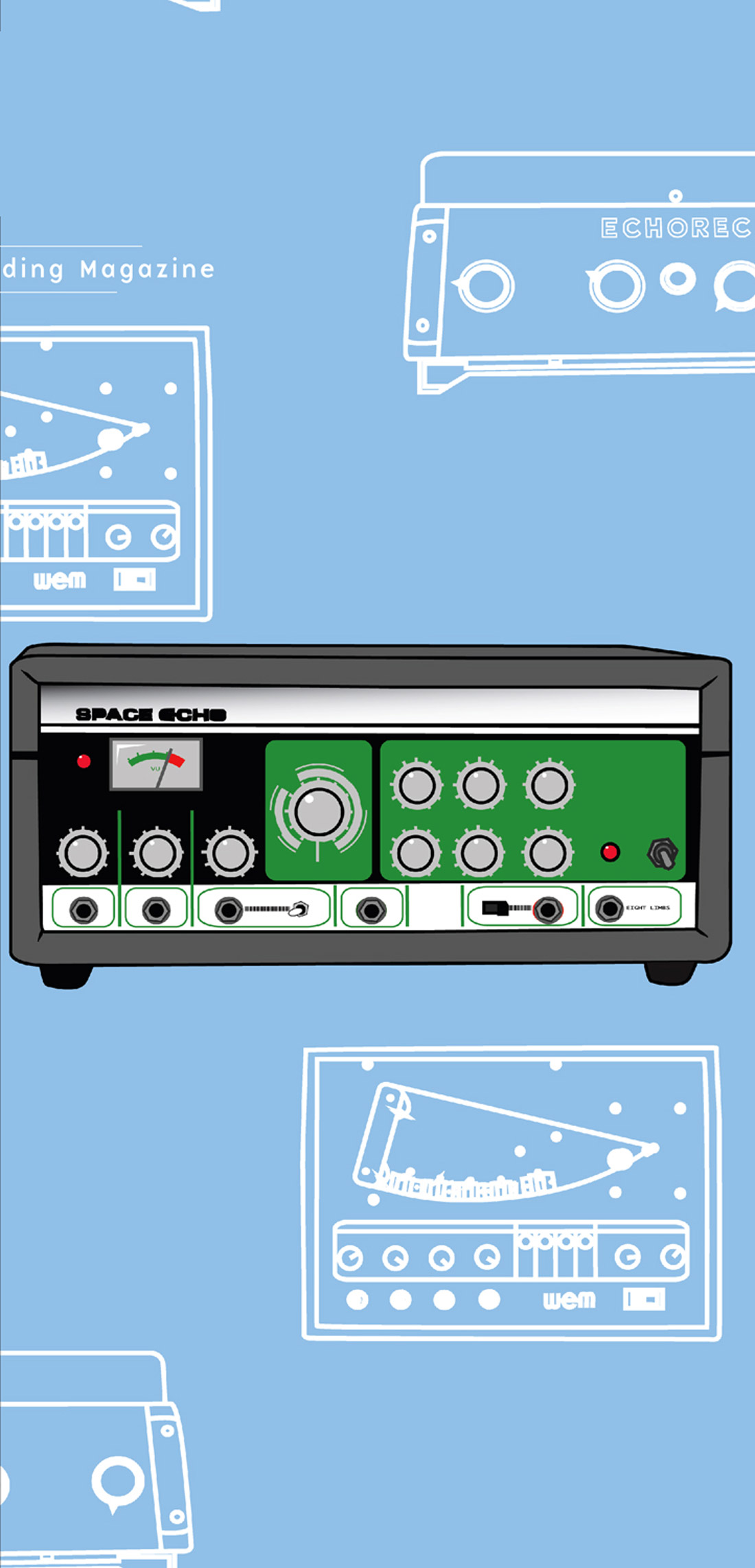It’s nice to see something at this price point showing up in the 500-Series world. The 581 is a Class AB, discrete preamp based on the venerable Neve 1081 mic preamp design. It has all your typical adjustments: two knobs for gain and output level; buttons for polarity, phantom power, and impedance; and routing to activate the front-panel instrument DI. Simple, unhyped, but full — I really like these preamps.
They’re pretty straightforward sounding in a great way. The top end isn’t super complex, and overall, the sound is balanced with a natural fidelity that’s neither too lo-fi nor too hi–fi. It sounded great on ambient guitar mics where the low mids can easily sound too uneven with preamps that generate a ton of harmonics. The available IMOD option that replaces the input transformer with a Carnhill will get you a little bottom bump and smooth out the top a little, if that’s your pleasure, but it’s not night and day. In project-to-project use, the difference between the two review units, one with IMOD and one without, was pretty nominal. I think the IMOD option is great if you’re planning on using it on kick or bass, but I didn’t find myself favoring either preamp particularly. If I needed a bit more low end, I usually got it at the mic with placement changes. Unfussy, dead simple to use, and pleasing to the ear, these became the sleeper preamps on my sessions this past month. Tracks recorded with the 581 during overdubs sat well and needed little to no EQ.
I have to say that I thought the distortion you could get from pinning the input gain was really pleasing and less “circuit-ey” than I expected. It sounded great on bass and keys when recording through the DI. A simple but surprisingly effective 3-LED meter is helpful for setting the gain for tone. Getting that gain setting right really seemed to be the trick for making the 581 come alive a bit when needed. I used the preamp for an unbalanced input to handle the output of an old [Roland] Space Echo on a vocal effects return, and it handily beat everything in a shootout. Other preamps accentuated the tape delay’s fuzz too much, making it harder to place behind the dry vocal. The 581 dealt with the aggressively weird midrange of the Space Echo easily.
The preamp handled percussion well, probably due to its lack of hype in the top end. I loved it on electric guitars and tambourine. Its timbre slotted in well in my studio in between tube and solid-state preamps that generate a lot more harmonic distortion. Both 581s were in use day-in-day-out.
Also available from Chameleon Labs is the CPS-501, a half-width, 1RU-height powered chassis for a single 500-Series module — perfect for your wayward modules and limited-rackspace needs. Two can be buckled together to make a full-width pair, and one power supply (included with each CPS-501) can power up to eight modules. I really like the portability of the original API Lunchbox chassis, so I think I’ll be sticking with that, but it’s good to have an option for the one or two modules that may be around. Interestingly, the CPS-501 matches Rupert Neve Designs Portico units in dimension, for placement into the RND 5088 console (Tape Op #73).
The 581 is an incredibly useful utility preamp, with our without IMOD, and you can easily track them over and over again on a song without buildup or ring. It’s a great value for the money, and it can easily find a place in your setup. (581 module $399 street, IMOD upgrade $140, CPS-501 chassis $169; www.chameleonlabs.com)
–Thom Monahan <thom.mn@gmail.com>
Mic Preamps | No. 109
MPDI-4 mic preamp/DI
by Dana Gumbiner
UnderTone Audio (UTA) is a relative newcomer to the world of boutique gear, the brainchild of producer/engineer Eric Valentine and electronic designer Larry Jasper, both mad geniuses in their own...




_disp_horizontal_bw.jpg)